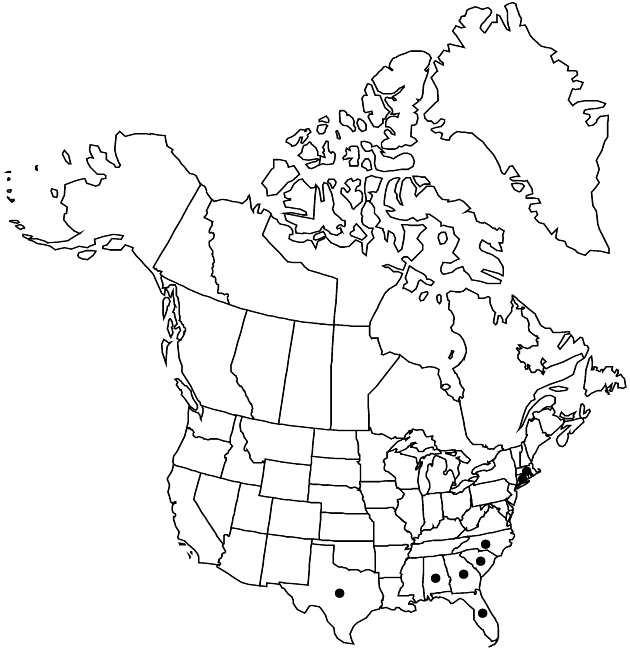Ageratum houstonianum
Gard. Dict. ed. 8, Ageratum no. 2. 1768.
Annuals, 30–80 cm (fibrous-rooted). Stems erect to decumbent, sparsely to densely pilose. Leaf-blades deltate to ovate, mostly 3–8 × 2.5–4 cm, margins toothed, abaxial faces sparsely to densely pilose, not evidently glanddotted. Peduncles viscid-puberulent, pilose, and stipitate-glandular. Involucres ca. 4 × 5–6 mm. Phyllaries narrowly lanceolate (0.6–1 mm wide), stipitate-glandular, sparsely to densely pilose, eciliate or inconspicuously ciliate, tips gradually tapering, indurate-subulate, 0.8–2 mm. Corollas usually lavender, rarely white. Cypselae sparsely strigoso-hispidulous; pappi of 5 distinct, oblong scales 2–3 mm. 2n = 20.
Phenology: Flowering Jun–Aug.
Habitat: Disturbed sites, mostly coastal
Elevation: 0–20 m
Distribution

Introduced; Ala., Conn., Fla., Ga., Mass., N.C., S.C., Tex., Mexico, Central America, Pacific Islands (Hawaii)
Discussion
Ageratum houstonianum is apparently native to southeastern Mexico and Central America; the North American plants are escapes and naturalized from cultivars. M. F. Johnson (1971) observed that forma isochroum (B. L. Robinson) M. F. Johnson (type from the state of Veracruz, Mexico) sometimes may be nearly eglandular.
Selected References
None.
Lower Taxa
"fine" is not a number.